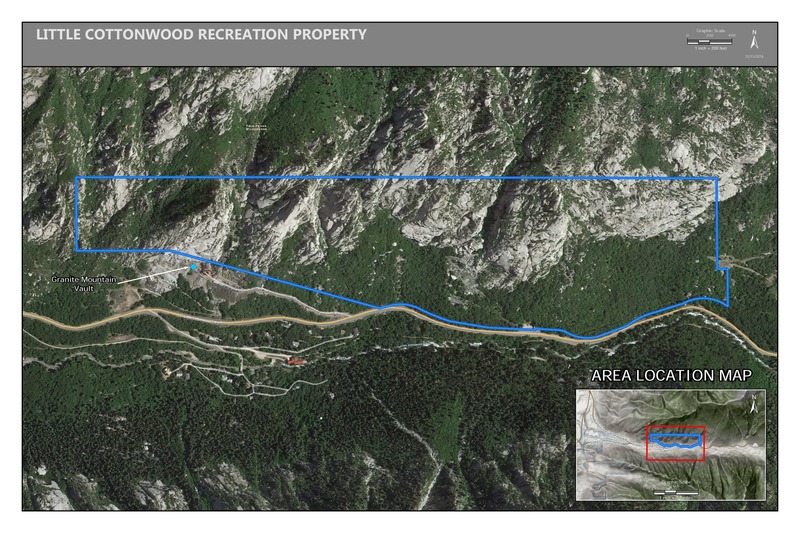| Type: | Trad, Alpine, 800 ft (242 m), 3 pitches, Grade II |
| FA: | Cado Avenali et al, 1972 |
| Page Views: | 7,873 total · 38/month |
| Shared By: | Arie on Jul 6, 2008 |
| Admins: | Perin Blanchard, GRK, David Crane |
Your To-Do List:
Add To-Do ·
Your Star Rating:










Use onX Backcountry to explore the terrain in 3D, view recent satellite imagery, and more. Now available in onX Backcountry Mobile apps! For more information see this post.
 Access Issue: Gate Buttress Area Recreational Lease: Climbs on Church Buttress above vault remain closed
Details
Access Issue: Gate Buttress Area Recreational Lease: Climbs on Church Buttress above vault remain closed
Details
Climbers Partner with LDS Church on Stewardship of Little Cottonwood Canyon Climbing
June 1st, 2017:The Salt Lake Climbers Alliance (SLCA), the Church of Jesus Christ of Latter-day Saints (LDS Church), and Access Fund announce the signing of an unprecedented lease for 140 acres in Little Cottonwood Canyon (LCC). The parcel, known as the Gate Buttress, is about one mile up LCC canyon and has been popular with generations of climbers because of its world-class granite.
The agreement secures legitimate access to approximately 588 routes and 138 boulder problems at the Gate Buttress for rock climbers, who will be active stewards of the property. The recreational lease is the result of several years of negotiations between LDS Church leaders and the local climbing community.
Access Note: The climbs on the Church Buttress above the vault as well as the Glen boulders that have been traditionally closed will remain closed.
Please help us steward this area and leave no trace.
Read More:
saltlakeclimbers.org/climbe…
June 1st, 2017:The Salt Lake Climbers Alliance (SLCA), the Church of Jesus Christ of Latter-day Saints (LDS Church), and Access Fund announce the signing of an unprecedented lease for 140 acres in Little Cottonwood Canyon (LCC). The parcel, known as the Gate Buttress, is about one mile up LCC canyon and has been popular with generations of climbers because of its world-class granite.
The agreement secures legitimate access to approximately 588 routes and 138 boulder problems at the Gate Buttress for rock climbers, who will be active stewards of the property. The recreational lease is the result of several years of negotiations between LDS Church leaders and the local climbing community.
Access Note: The climbs on the Church Buttress above the vault as well as the Glen boulders that have been traditionally closed will remain closed.
Please help us steward this area and leave no trace.
Read More:
saltlakeclimbers.org/climbe…
Description

Thunderbolt Ridge is rooted in the heart of the Lone Peak Wilderness dividing the middle and west basins of Hogum Fork. Its moderate spine provides some aesthetic vertical en route to South Thunder or along one of the areas many scrambling traverses. Thunderbolt is the first ridge west of the imposing buttress housing Hogum's Heroes and has a broken, shattered look from the east. From the west, the ridge is much cleaner with a steep west aspect and a cool sawtooth horizon. Thunderbolt is fairly short, but the lanky approach makes up for its brief height. Overall the ridge runs for at least a quarter mile gaining about 800 feet, but only a few sections muster a fifth class rating.
Catch the ridge where it rises out of a broad shoulder and enjoy several hundred feet of initial beautiful scrambling. After gaining some elevation the ridge steepens for a step at a short slab split by a couple off-hands cracks (fun). More elevation gains mellower terrain and then another step. Numerous traverses, straddles, death-block scares ($#*%), and the increasing relief keep things interesting. The ridge seems to be exfoliating giant slabs westward; often you are climbing these teetering columns hoping something is welding them in place. There are countless variations as you gain elevation, avoid obstacles, and climb others. Most of the climbing is a mix of steep scrambling and sections of easy fifth class- but expect a few sections up to 5.6.
As Thunderbolt Ridge merges with the larger Lightning Ridge the climbing returns to scrambling- albeit much more loose and dangerous than the initial section. Top out on Lightning Ridge and enjoy the fantastic views south to Box Elder and Timp. Overall the ridge is pretty mellow with just a few technical sections. Several areas are incredibly loose and are just waiting to trundle. But generally the rock is solid, beautiful, and the setting is definitely wilderness.
Catch the ridge where it rises out of a broad shoulder and enjoy several hundred feet of initial beautiful scrambling. After gaining some elevation the ridge steepens for a step at a short slab split by a couple off-hands cracks (fun). More elevation gains mellower terrain and then another step. Numerous traverses, straddles, death-block scares ($#*%), and the increasing relief keep things interesting. The ridge seems to be exfoliating giant slabs westward; often you are climbing these teetering columns hoping something is welding them in place. There are countless variations as you gain elevation, avoid obstacles, and climb others. Most of the climbing is a mix of steep scrambling and sections of easy fifth class- but expect a few sections up to 5.6.
As Thunderbolt Ridge merges with the larger Lightning Ridge the climbing returns to scrambling- albeit much more loose and dangerous than the initial section. Top out on Lightning Ridge and enjoy the fantastic views south to Box Elder and Timp. Overall the ridge is pretty mellow with just a few technical sections. Several areas are incredibly loose and are just waiting to trundle. But generally the rock is solid, beautiful, and the setting is definitely wilderness.

 Continue with onX Maps
Continue with onX Maps Sign in with Facebook
Sign in with Facebook

































4 Comments